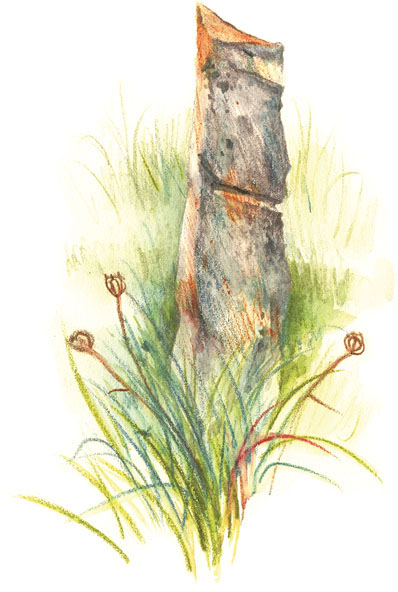
Rural artifacts connect us to our history in ways big and small. Windmills are fairly common in many rural areas. Limestone fence posts are more often seen where suitable trees don’t grow in usable numbers. (These days, though, unlovely steel posts are the norm!)

In some areas, wood is in very short supply. That’s why early settlers in the Great Plains sometimes built sod houses until they could import the lumber to build more permanent homes. Even the fence posts may be limestone. You can see the grooves in these massive posts for holding the wire in place.

This post was just down the line from the one in the photograph; they’re marvelously varied in shape. It was done with layers of watercolor pencil, applied dry, wet carefully and allowed to dry again. It needed a bit more punch, so I added another layer and wet it again, then added a little dry pencil work for texture. The tall weeds are Queen Anne’s lace, a very common sight along the edges of old fields.

In some rural areas, you may see windmills still in use to generate electricity or pump water. The newer windmills are not as picturesque, but many of the old mills are still standing.
Pay attention to what you see: the shapes of the blades, the number of them, the angle from where you sit. It’s not necessary to be an engineer or an architect to depict these in an interesting way, but a degree of accuracy lends believability. This quick annotated sketch is in my journal. It was actually a cloudy, gray day, but it’s okay to tweak color and mood if you want.